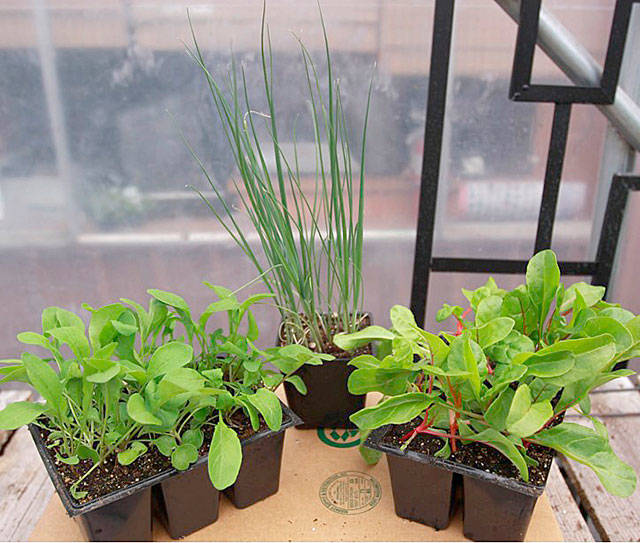By Jeanette Stehr-Green and Amanda Rosenberg
Although your summer garden is just reaching its full potential and you still haven’t harvested a single tomato, it’s time to switch gears and think about planting a fall garden.
Although fall gardens generally do well on the North Olympic Peninsula, knowing what and when to plant and how to plant it will increase your chances of success.
What to plant
When planning a fall garden, think of the vegetables that you planted in early spring when the weather was cool such as leafy green vegetables, root crops and cole crops. Many perennial herbs including rosemary, sage, oregano and thyme also do well.
Realize that even among “cool weather crops” some varieties are better suited to fall cropping than others. Seek out and plant those varieties, when possible. (See sidebar)
When to plant
For a successful fall garden, you need to plant early enough so that crops are producing before the weather cools but late enough so that plants will not mature in the heat of summer and bolt before producing.
First frost in Clallam County, on average, occurs from mid-October to mid-November. As a result, most fall crops are planted in July and August.
The longer a plant takes to mature, the earlier it must be planted. Crops with longer days to maturity such as carrots, beets, Swiss chard and kohlrabi should be planted in early July. Crops that mature more quickly such as arugula, lettuce, kale, spinach, winter onions and broccoli should be planted in late July and early August.
Because the weather (and first frost) are unpredictable, consider planting the same crop on two or more dates, spaced seven to 10 days apart. If cold temperatures arrive late and your first planting bolts, you still have the second planting for a fall harvest. If the first frost comes early, the second planting might not make it to maturity, but hopefully, plants will overwinter and start growing again when temperatures warm in late winter, providing a harvest in early spring.
How to plant
Because the height of summer is not the best time to start tender seedlings, you would be well served to start your fall vegetables indoors. As soon as seedlings are 3 weeks old, transplant them into the garden on a cloudy day, if possible.
Plant in the warmest place in your garden, a spot that will have good sun exposure as the sun sinks lower in the sky.
Good soil drainage is important as rains return in the fall. A gentle south-sloped or terraced site captures the sun and provides the drainage needed.
If you plant in a spot that had a spring or summer crop, be sure to rotate plant families. Consider adding a little compost to replace nutrients.
Space plants farther apart than you would in spring or summer to improve air circulation around the leaves and minimize fungal diseases.
Avoid late applications of nitrogen that encourage water-filled, frost-susceptible tissues.
To help plants reach maturity or keep them producing longer, be prepared to protect your crop against cold temperatures and excessive rain.
Cloches, row cover and low tunnels can help warm the air around your planting and allow plants to reach maturity or produce longer.
With a little luck your fall garden will pay off, maturing in late fall (as planned) or overwintering and producing in early spring, weeks before the same crops planted in spring are ready for harvest.
Brown Bag series continues
The Thursday “Brown Bag” series continues this week. On July 27, Janine Reed from the Clallam County Office of Environmental Health will be discussing “Drain Field Cover Plants.” The presentation is from noon-1 p.m. in the commissioners meeting room in the Clallam County Courthouse in Port Angeles.
The program is open to the public and free, but donations to help support the program are appreciated.
The “Garden Talk” radio program airs on Monday, July 31, on KONP AM 1450 and FM 101.7 from 1-2 p.m.
Jeanette Stehr-Green and Amanda Rosenberg are WSU-certified Clallam County Master Gardeners.



